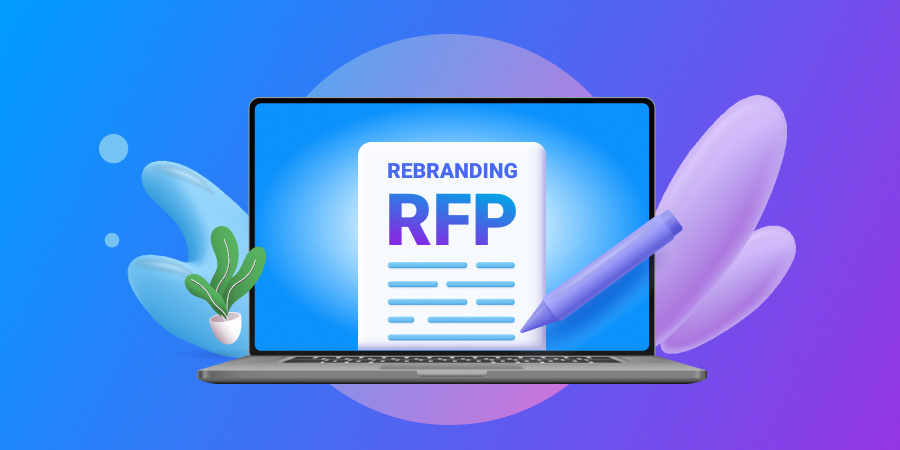This easy-to-browse list of branding terms will help you get started with your branding project as well as improve the quality of communication with your branding agency.
We’ve grouped the terms into categories to help you navigate the exciting and intricate world of branding, from strategy and planning to brand design and marketing.
Digital Silk develops authentic brands. Request A Quote
The 5 Most Common Branding Terms
The following terms are all essential to building and maintaining a strong brand. You will need a deep understanding of these terms and their wider context to create a successful brand strategy.
- Brand Identity: A collection of visual, auditory, and conceptual elements that represent a brand and distinguish it from others, such as name, logo, and employee training.
- Brand Management: The strategic and tactical activities used to build, maintain, and enhance a brand’s image and reputation.
- Brand Personality: The set of human characteristics customers and prospects associate with a brand.
- Brand Positioning: The way a brand is positioned in the market and how it distinguishes itself from competitors.
- Brand Strategy: The long-term plan for how a company will grow and manage its brand to achieve specific business goals.
Branding Terms Used In Strategy & Planning
From strategic brand naming to positioning, these are the terms used during the planning phase of your branding project as your unique brand identity begins to take shape.
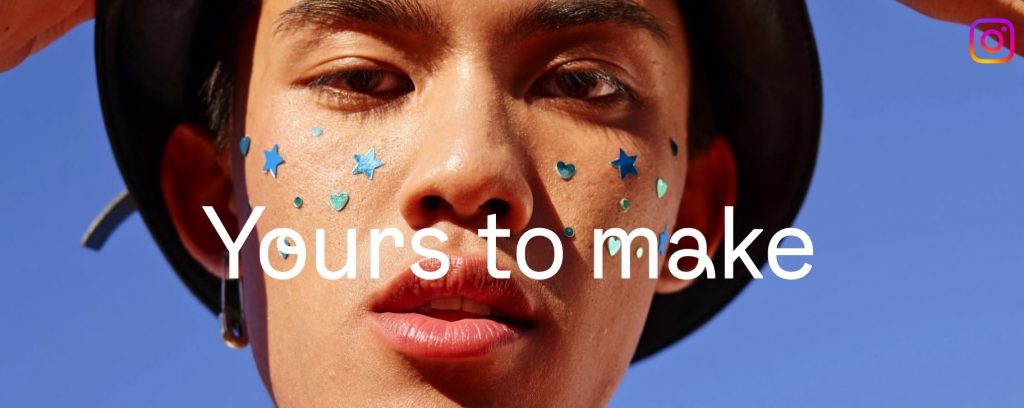
[Source: Instagram]
6. Brand Name
A brand name refers to the words used to represent a brand. There are three types of brand names:
- Descriptive names, like General Electric, use words to directly describe the product or service.
- Evocative names (Amazon, for example) use words to create an emotional connection or feeling.
- Invented names, such as Google, are made up of words with no direct meaning but are.
7. Mission Statement
A mission statement is a brief sentence that defines a company’s benefits for end users, who it serves, and its approach to achieving this.
More current than a vision statement, it helps guide decision-making and communicates the establishment’s identity to customers and employees.
Google’s mission statement, for instance, is “[t]o organize the world’s information and make it universally accessible and useful.”
8. Brand Statement
A brand statement is a summary that captures a brand’s mission, values, and unique selling proposition. It helps convey a brand’s core values and sets it apart from competitors.
For example, Nike’s brand statement is “[t]o bring inspiration and innovation to every athlete in the world.”
9. Vision Statement
A vision statement outlines a company’s long-term goals and aspirations. It helps provide direction and motivation for employees and stakeholders.
Often confused with a mission statement, a vision statement is more future-oriented than a mission statement.
For example, Amazon’s vision statement is “[t]o be Earth’s most customer-centric company, where customers can find and discover anything they might want to buy online.”
10. Core Values
Core values are the fundamental beliefs and principles that guide a company’s actions and decisions. They help shape a company’s culture and provide a framework for its brand identity.
A great example of core values is the outdoor brand Patagonia. Dedicated to environmental responsibility and ethical business practices, Patagonia has aligned their entire design, production, and marketing with these values, using recycled and durable, and promoting ethical consumerism.
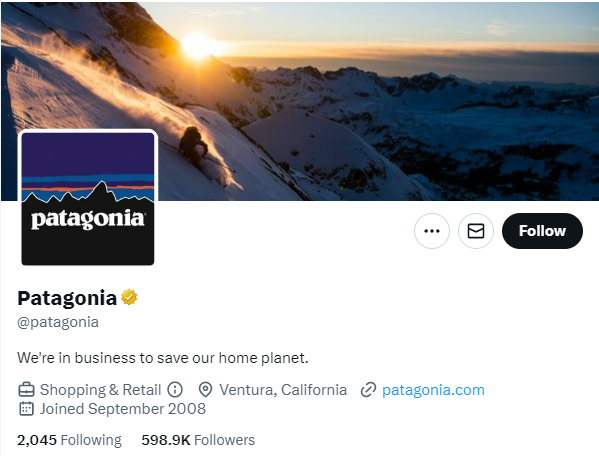
[Source: Twitter/Patagonia]
11. Brand Value Proposition
Brand Value Proposition (BPV) is the statement that defines what sets a brand apart from its competitors. This feature highlights the reason why consumers should choose the brand over others.
Brands will often highlight their BPV in their core messaging. For example, Uber highlights its convenience and safety with the message, “The smartest way to get around.”
12. Brand Voice
Brand voice is a brand’s consistent tone, personality, and style that is reflected in its design, advertising, and copy.
Mailchimp, for example, uses a brand voice that is amusing, quirky, and approachable, which is reflected in its advertising, website design, and social media content.
We send 600 million daily emails like a golden retriever eats a plate of spaghetti. https://t.co/y5uHvwvZVU
— Intuit Mailchimp (@Mailchimp) April 14, 2015
Cards Against Humanity, on the other hand, has a characteristically snappy and sarcastic voice.
Clam-O-Naise® is more than just a condiment—it’s a lifestyle. Set sail for fashion with our collection of fresh, tangy Clam-O-Merch. Supplies are limited, so get it while you still clam! https://t.co/T6l6HYFVsa pic.twitter.com/BfZQxX4efQ
— Cards Against Humanity (@CAH) October 11, 2022
13. Tagline
A tagline is a short phrase or slogan that is used to communicate a brand’s value proposition or messaging. For example:
- Nike, “Just Do It”
- Apple, “Think Different”
- McDonald’s, “I’m Lovin’ It”
14. Brand Assets
Brand assets are tangible and intangible elements that contribute to a brand’s value and recognition. Some examples include logos, trademarks, patents, copyright, source code, and customer databases, which usually hold heavily guarded private information.
15. Brand Messaging
Brand messaging refers to the language and tone used by a brand to communicate. The message includes your brand’s value proposition, identity, and the benefit your products offer to target audiences.
16. Branding Channels
Branding channels are the different channels through which a brand can communicate with its audience, including advertising, social media, packaging, and in-store displays.
17. Brand Collaboration
Brand collaboration refers to a cooperative effort between two or more brands with the goal to work together on a project, campaign or product. It involves combining the strengths, resources and audiences of each brand to create mutually beneficial results.
Want to know more about brand collaboration?
18. Brand Consistency
Brand consistency refers to the uniformity of a brand’s messaging, design, and values across all touchpoints.
By maintaining a consistent brand image across all channels and platforms, you can boost revenue by up to 23%.
We build custom branding strategies. Schedule A Consultation
Branding Terms Used In Brand Design
From visual identity to brand book and logo design, these are the terms you will come across when you engage in your branding design project.
19. Brand Design
Brand design refers to the creation of a visual identity that represents the brand’s personality, values, and unique selling proposition.
This includes the development of a logo, typography, color palette, and other design elements that work together to create a consistent and cohesive brand image.
20. Brand Redesign
Brand redesign is the process of changing or updating a brand’s visual identity. It’s important to be careful about finding that balance between honoring tradition and keeping up with current trends.
This is often achieved through a host of services, such as logo redesign and custom website redesign.
21. Visual Identity
Visual identity is the visual representation of a brand’s personality, values, and attributes, including logos, typography, color palettes, and imagery.
22. Brand Book
The brand book is a comprehensive document that outlines a brand’s visual identity, messaging, and values. It describes a brand’s mission, vision, voice, and tone in detail. A cohesive Brand Book is just one of the brand design services Digital Silk provides.
23. Style Guide
A style guide is a subset of a brand book that outlines how a brand’s visual identity should be used across different channels, including guidelines for how logos, typography, color palettes, and imagery should (and should not) be depicted.
24. Brand Guidelines
Much like a style guide, brand guidelines also show how a brand’s visual identity should be used across multiple channels. The only difference is that brand guidelines include an explanation of a brand strategy and provide a clear image of how the company wants to speak, look and interact internally and with its target audience.
25. Logo Design
Logo design is the process of creating a unique and memorable symbol or emblem that represents a brand’s identity.
This involves the use of typography, color, and other design elements to create a visual representation of the brand’s personality and values.
26. Wordmark
A wordmark is a logo that uses only the brand’s name (or a stylized version of the brand’s name) as the logo.
Examples include Coca-Cola, FedEx, and Disney. Walt Disney Productions designed the logo using traditional animation techniques, evocative of Walt Disney’s own handwriting.
27. Trademark
A trademark is a legal designation that protects a brand’s name, logo, and other visual or verbal elements from being used by others without permission.
28. Brand Imagery
Brand imagery represents the visual elements, such as photographs or illustrations, used to convey a brand’s messaging and personality.
29. Graphic Design
Graphic design is the art of creating visual content that communicates a message or idea. This includes using typography, images, and other design elements to create visual branding assets such as logos, marketing materials, website planning, and layouts.
It’s a good idea to have a clear idea of your branding plans and strategy as early as the website development stage.
30. Core Color Palette
The core color palette is the set of colors that are used consistently across all branding elements to create a recognizable and cohesive look and feel for the brand.
31. Symbol
A symbol is a visual representation that communicates a brand’s identity, values, or message. It can be a graphic or abstract design and is often used in conjunction with a brand’s name or logo.
32. Typographic System
A typographic system is a set of fonts and typography rules used to create a consistent look and feel for a brand’s written communications, such as in advertising or on product packaging.
33. Brand Packaging Design
Brand packaging design is the visual and structural design of a product’s packaging that communicates the brand identity and helps it stand out on shelves.
Examples include the minimalist and sleek design of Apple product packaging or the colorful and playful packaging of a children’s toy brand like Lego.
We offer custom proposals. Speak With Our Experts
Branding Terms Used In Brand Development & Implementation
From brand audit and reputation to digital branding, here are the terms to know when you reach the next stages of your branding journey – development and implementation.
34. Brand Development
Brand development is the process of creating, maintaining, and evolving a brand image or identity for a product, service, or organization.
It involves identifying and communicating key values, attributes, and messages that differentiate the brand from competitors, as well as establishing a visual identity and tone of voice that resonates with the brand’s target audience.
The goal of brand development is to create a strong and consistent brand that builds customer loyalty, trust, and recognition over time.
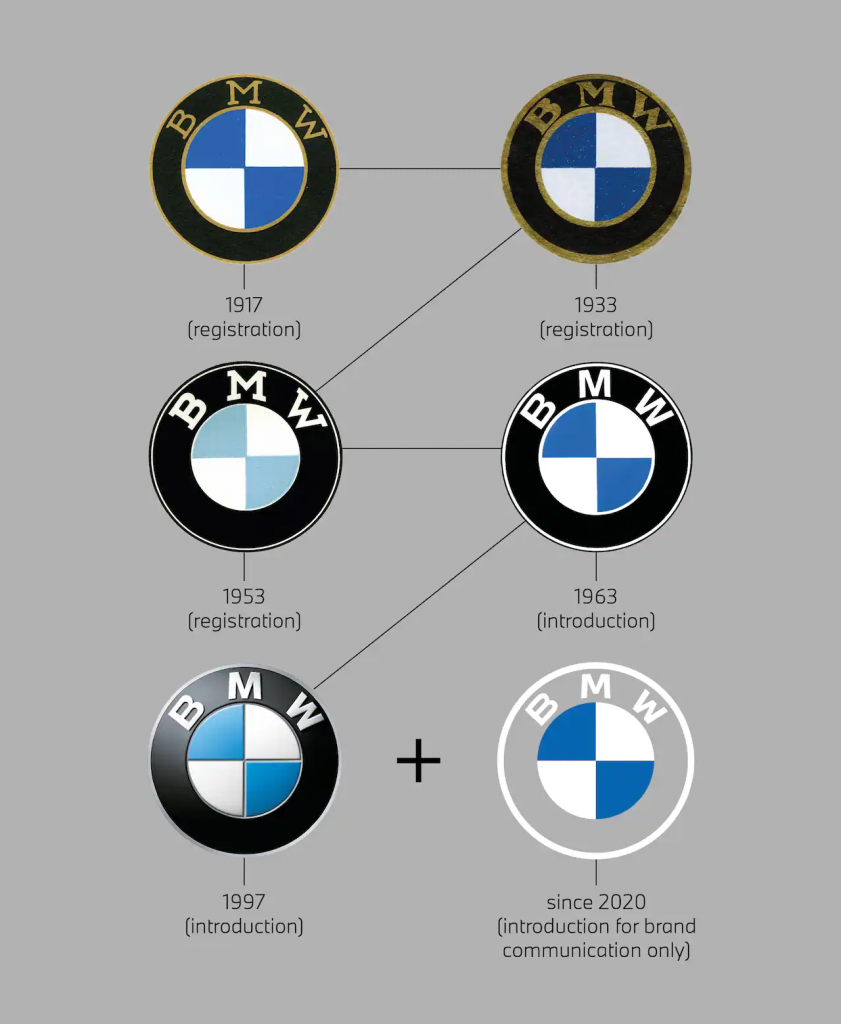
[Source: BMW]
35. Digital Branding
Digital branding is the use of digital platforms and technologies, such as social media, websites, and mobile apps, to create and promote a brand. Digital branding encompasses a brand’s online identity, reputation, and messaging.
Airbnb’s digital branding strategy leverages user-generated content, influencer marketing, and social media to create an authentic and safe space for travelers worldwide.
for the very first time, guests can spend the night in the palais garnier, the parisian opera house that inspired @OfficialALW’s record-breaking musical, @phantomopera 🌹
— Airbnb (@Airbnb) February 13, 2023
request to book the best seat in the house on march 1st at 6PM CET: https://t.co/GmnY9y2eBA pic.twitter.com/dFX4I8eqVb
36. Brand Experience
Brand experience refers to the overall impression that customers have of a brand based on their interactions with it, including customer service, product quality, and marketing messages.
Examples include the in-store experience, online experience, and customer service interactions.
[Source: YouTube/BigThink]
37. Brand Presence
Brand presence refers to the visibility and recognition of a brand in the marketplace, achieved through advertising, marketing, and public relations efforts, as well as the quality and consistency of the brand’s products or services.
A strong brand presence can help a company build trust and credibility, increase customer loyalty, and ultimately drive sales and revenue.
Branding Terms Used In Reporting & Optimization
From brand audit to brand recognition, here are the terms to know when you start using and testing your brand.
38. Brand Audit
A brand audit is a comprehensive evaluation of a brand’s strengths and weaknesses, such as messaging, visual identity, and market position. It helps identify areas for improvement and refine a branding strategy.
39. Brand Equity
Brand equity is the perceived value of a brand in the eyes of consumers, which is influenced by factors such as brand recognition, perceived quality, and customer loyalty, and can be leveraged to create brand extensions, enter new markets, or increase pricing power.
40. Brand Awareness
Brand awareness refers to the level of familiarity and recognition that consumers have with a particular brand and its products or services. It represents the extent to which a brand is known and identified by potential customers in the market.
41. Brand Recognition
Brand recognition is the extent to which a brand is recognized by consumers and associated with specific products or services.
One of the most famous drivers of brand recognition that we all know is McDonald’s golden arches.
42. Brand Reputation
Brand reputation is the overall perception and assessment of a brand’s quality, reliability, and credibility among consumers and stakeholders.
Examples include Apple’s reputation for innovation and quality or the high-end reputation of a luxury fashion brand like Chanel.
43. Brand Perception
Brand perception relates to the way that consumers view and interpret a brand. It is based on factors such as its image, reputation, and associations with particular values.
Building a strong, relatable brand perception can result in consumers identifying with, and ultimately choosing your brand above others.
However, poor decisions can lead to negative brand perceptions, as Balenciaga experienced following a scandalous advertising campaign in 2022. The backlash resulted in the hashtag #balenciagate trending on Twitter and caused damage to how the general public viewed the brand.
As an example of what not to do, Balenciaga’s brand perception soured quickly after a scandalous 2022 advertising campaign. The campaign featured plushy toys such as teddy bears wearing fetish gear. Worse still, child models held the teddy bears in their hands.
44. Brand Authority
Brand authority refers to the level of trust and credibility a brand has established in the market. It is earned by delivering quality products and services on a regular basis. People trust a renowned brand not only when it comes to its services, but also when providing expert knowledge.
For example, Apple is a brand that has established a strong authority in the tech industry due to its dependable, luxurious products and user-friendly interface.
45. Rebranding
Rebranding refers to the process of changing a brand’s identity, messaging, or image to improve its relevance, appeal, or performance in the marketplace.
A brand may wish to rebrand to improve its image, better align with its target audience, differentiate itself from competitors, or adapt to changing market conditions.
Our rebranding services helped to broaden Dropbox’s offerings, reposition the brand to target a wider market and refresh its logo.
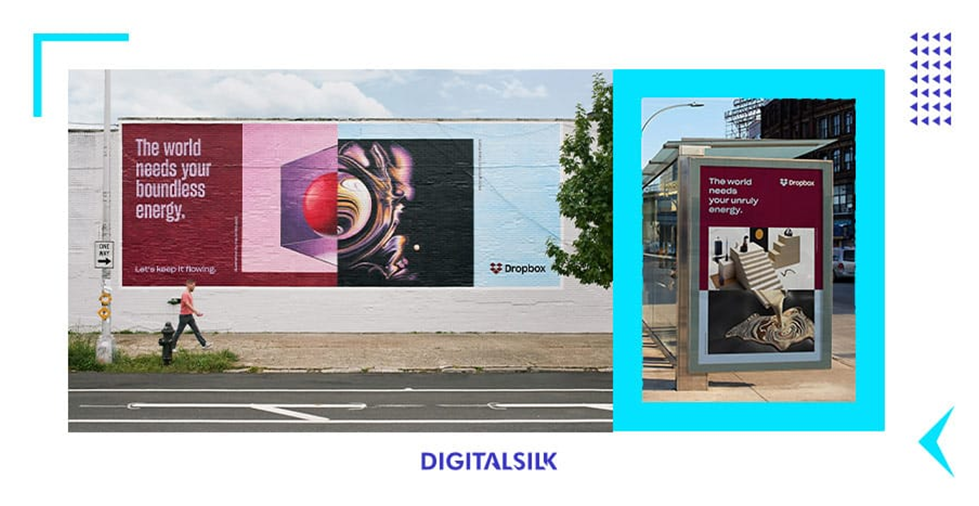
46. Brand Extension
Brand extension is the use of an established brand name and identity to introduce new products or services that are related to the original product or service.
Leveraging the trust and recognition of an existing brand allows companies to reduce the risk associated with launching a new offering.
This strategy enables businesses to expand their market reach, diversify their portfolio and strengthen customer loyalty by delivering a consistent brand experience across different categories.
47. Brand Loyalty
Brand loyalty refers to a customer’s dedication and preference for a particular brand, and results in repeat purchases.
One of the most important tools for increasing profits, a loyal customer’s positive reviews and word-of-mouth recommendations can additionally strengthen a brand reputation.
Apple, for instance, has a loyal customer base that is willing to pay a premium for its products and promote them to others. Apple products remain popular, even though its product prices are moving faster than inflation.
Loyal customers are unwilling to switch out of the Apple Ecosystem, so they become locked into paying more pic.twitter.com/p5pqv3DnM4
— Insider Business (@BusinessInsider) August 10, 2021
Branding Terminology Used In Marketing
From brand advocate to brand ambassador, let’s take a look at the most common terms you’ll come across when you engage in promoting your brand.
48. Brand Marketing
Brand marketing refers to the activities and strategies used to promote and market a brand, such as advertising, sponsorships, PR events, and content marketing.
The @Chiefs take it to the house once again, and the dynasty is just getting rolling.☝🏆
— Nike Football (@usnikefootball) February 13, 2023
Kansas City is Never Done #SBLVII pic.twitter.com/jOwpAZnrWW
49. Advertising
Advertising is a form of marketing communication that promotes a brand, product, or service to a target audience through various channels, such as TV, print, or digital media.
Some examples of iconic and memorable advertising include Apple’s “Think Different” campaign, Coca-Cola’s “Share a Coke” campaign, and Snickers’ “You’re Not You When You’re Hungry” campaign.
50. Go-To-Market Brand Strategy
Go-to-market brand strategy is a plan that outlines how a brand will launch and promote its products or services in a particular market and may include elements such as messaging, positioning, target audience, distribution channels, and pricing.
51. Brand Advocate
A brand advocate is a loyal customer or supporter who actively promotes a brand to others. They help generate positive word-of-mouth marketing and build brand credibility.
Tesla has a passionate community of brand advocates, who primarily operate on social media.
Even some of the best AI software engineers in the world don’t realize how advanced Tesla AI has become
— Elon Musk (@elonmusk) March 6, 2022
52. Brand Ambassador
A brand ambassador is a person who represents a brand and promotes its products or services through various marketing and promotional activities. The goal is to increase brand awareness and attract new customers.”
For instance, a popular celebrity who endorses a clothing brand wears their clothing at public events, and shares photos on social media becomes a brand ambassador.
Our Place, a brand selling Instagram-worthy pots and pans, collaborated with Selena Gomez to introduce exclusive shades of their products.
For an in-depth understanding of what is a brand ambassador and what exactly they do, follow this link.

Selena, an avid actress, singer and chef, wanted to present Our Place’s products in her cooking show. She also tied her Mexican heritage into the collaboration, expanding to her signature “Rosa” and “Azul” cooking kitchenware.
53. Brand Reputation Management
Brand reputation management involves actively monitoring and shaping how a brand is perceived by customers, stakeholders, and the public, typically through strategies such as crisis communications, online reputation management, and brand advocacy.
We offer custom proposals. Schedule A Consultation
Have A Branding Project? Work With Digital Silk
Now you have a keen understanding of the most important branding terms, consider putting them into practice by partnering with our team of award-winning designers. Our team at Digital Silk offers end-to-end branding solutions to help clients enhance their brand awareness, credibility and growth.
We create a clear branding strategy that is tailored to their specific industry and goals. In each of our branding projects, we implement a trio of golden values:
- Project ownership: Our team of experienced consultants takes ownership of your project, driving it forward as if it were our own, utilizing industry experience and years of expertise.
- Transparency: We maintain complete transparency throughout your project, from onboarding to launch and beyond, with regular meetings, detailed reports, and precise time-tracking to keep you in the loop.
- A results-driven approach: Our recommendations are based on data, best practices, and industry insights, allowing us to take a results-driven approach to every project, ensuring that you see measurable results.
Our full-service web design agency works with businesses of all sizes and across industries, including startups, multinational corporations, and everything in between.
We generate custom quotes for every project. Contact us to set up a free consultation, tell us about your project and meet our expert brand strategists, designers and developers!
"*" indicates required fields





